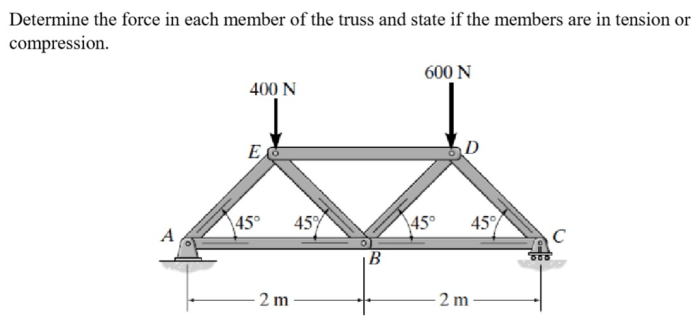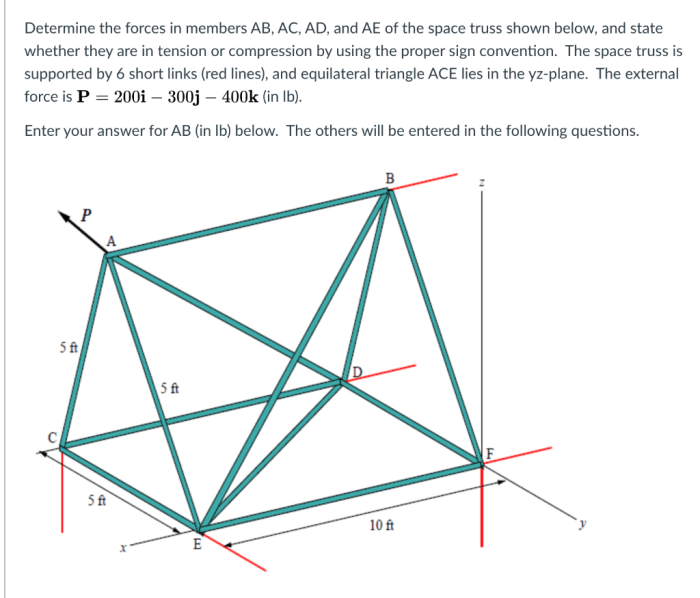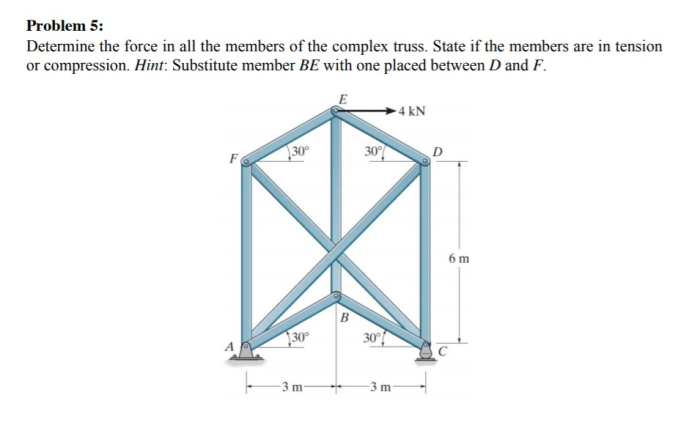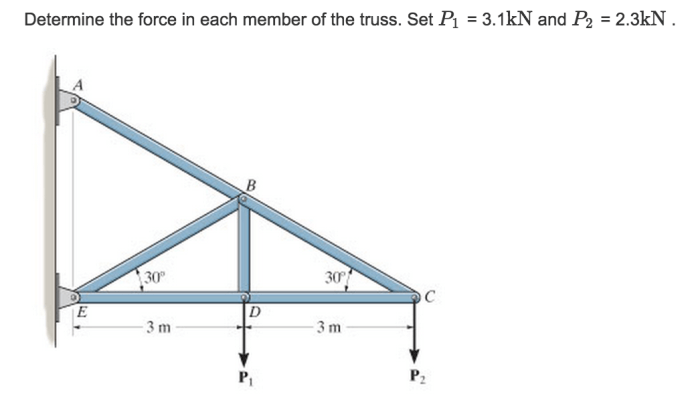Determine the force in member ab of the truss. – Determining the force in member AB of a truss is a crucial aspect of structural engineering, providing insights into the behavior of these intricate structures under various loading conditions. This article delves into the concept of trusses, the role of member AB, and the methods employed to calculate the force acting upon it, offering a comprehensive understanding of this fundamental aspect of truss analysis.
Trusses, widely used in bridges, roofs, and other load-bearing structures, are composed of interconnected members arranged in a triangular configuration. Member AB, a vital component of the truss, is subject to forces that must be accurately determined to ensure structural integrity.
1. Definition of the Truss

A truss is a structural framework that consists of interconnected members forming a rigid structure. It is designed to support loads by distributing them across its members.
Trusses are typically made of steel, aluminum, or wood and are used in various applications, including bridges, roofs, and towers.
There are different types of trusses, including the Pratt truss, Warren truss, and Howe truss, each with its unique design and characteristics.
2. Member AB of the Truss

Member AB is a diagonal member in the truss that connects point A to point B. It is subjected to both axial force and shear force.
The axial force in member AB is caused by the external loads acting on the truss, while the shear force is caused by the reactions at the supports.
3. Methods for Determining the Force
There are several methods for determining the force in member AB of the truss, including:
- Method of Joints: This method involves cutting the truss at a joint and analyzing the equilibrium of the forces acting on the cut members.
- Method of Sections: This method involves cutting the truss at a section and analyzing the equilibrium of the forces acting on the cut members.
- Software for Force Analysis: There are various software programs available that can be used to analyze trusses and determine the forces in the members.
4. Factors Affecting the Force: Determine The Force In Member Ab Of The Truss.

The force in member AB of the truss is affected by several factors, including:
- External Loads: The magnitude and direction of the external loads acting on the truss will influence the force in member AB.
- Geometry of the Truss: The geometry of the truss, including the length and angle of the members, will also affect the force in member AB.
- Material Properties: The material properties of the truss members, such as their strength and stiffness, will influence the force in member AB.
5. Applications

Determining the force in member AB of a truss is crucial in various applications, including:
- Bridge Design: Engineers need to determine the forces in the members of a bridge truss to ensure that the bridge can safely support the loads it will be subjected to.
- Roof Design: Determining the forces in the members of a roof truss is important to ensure that the roof can withstand wind and snow loads.
- Tower Design: Engineers need to determine the forces in the members of a tower truss to ensure that the tower can withstand wind loads and other environmental forces.
Question & Answer Hub
What is the significance of determining the force in member AB of a truss?
Determining the force in member AB is essential for assessing the structural integrity of the truss. It helps engineers ensure that the member can withstand the applied loads without failure, preventing catastrophic structural collapse.
How does the geometry of the truss affect the force in member AB?
The geometry of the truss, including the angles and lengths of its members, influences the distribution of forces within the structure. Changes in geometry can alter the magnitude and direction of the force in member AB.
What factors should be considered when selecting a method for determining the force in member AB?
The choice of method depends on the complexity of the truss, the availability of software, and the desired level of accuracy. The method of joints is suitable for simple trusses, while the method of sections is more appropriate for complex structures.